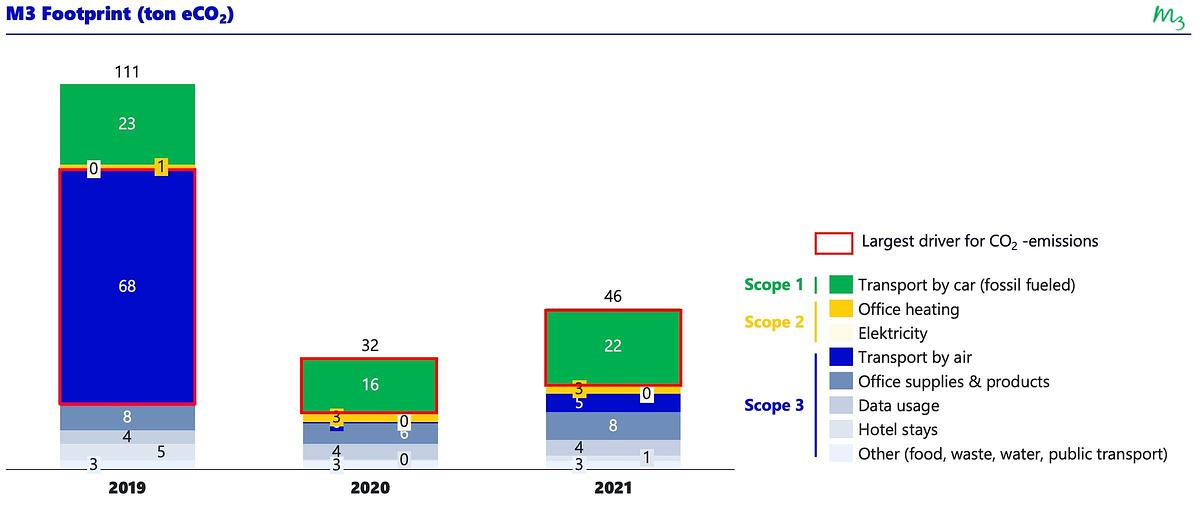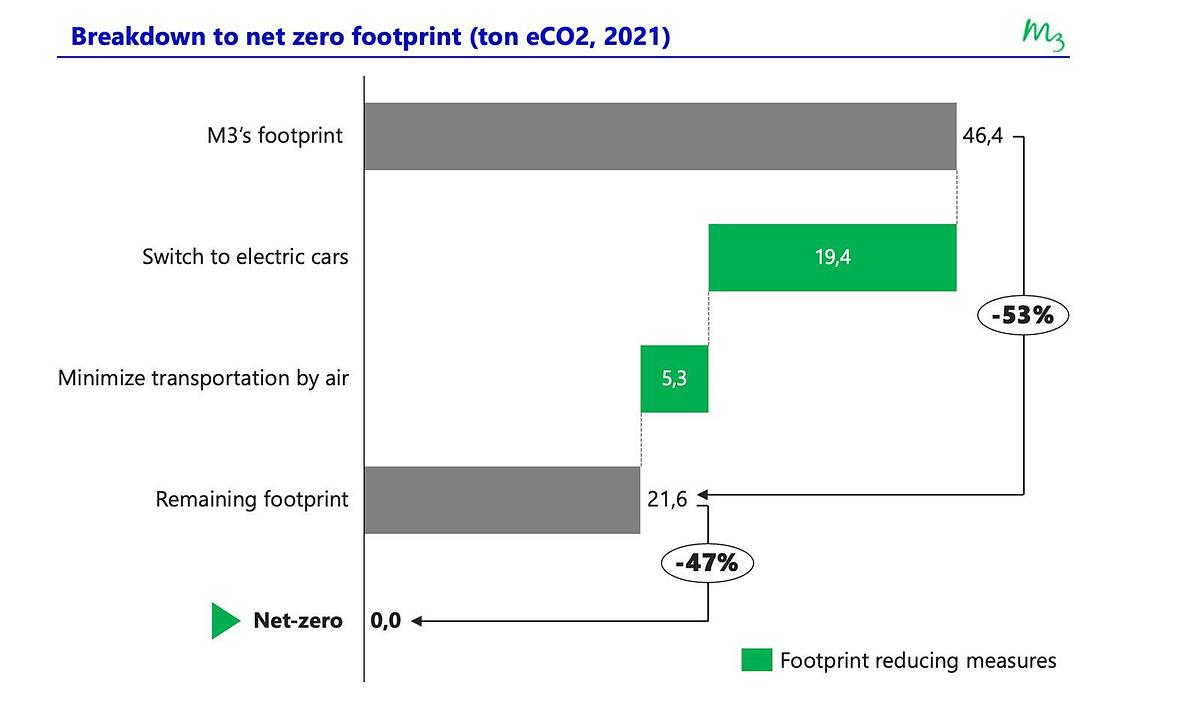Times are changing — and with it, the topics that occupy our minds and lives. Sustainability, for example, is no longer an option. More and more companies map out their footprint and take concrete action to eliminate, reduce, or offset their CO2 emissions. Clients and potential hires have asked about our sustainability efforts, so we thought it was high time for M3 Consultancy to have a close look at our footprint. We, too, want to contribute our bit to a better world.
We spent the past year working part-time on this internal project. In the spirit of New Year’s Resolutions, we’ve set ourselves the goal to achieve net zero emissions by 2023. In this blog post, we’d like to share what we’ve discovered and how we’ll move forward!
Achieving net zero emissions: prevention is better than the cure
Our ultimate goal is to achieve net zero emissions. But how to go about it? Usually, it requires two steps: reducing and offsetting our current emissions.
- Reduction Our guiding principle is that we need to minimize our emissions as much as we can. So, we first needed to list the business elements and activities that cause them, including their share in our total emissions and the extent to which we can eliminate or reduce them.
- Offsetting Part of our emissions are indirect. These stem from business elements we can’t influence. We will make sure to offset such remaining emissions.
1. Mapping out our footprint
We started by mapping out our footprint using Greenhouse Gas Protocol scopes as our guidelines. We’ve summarized the results in the figures below.

After we’d listed all our business activities and materials, we had a look at our biggest CO2 emissions drivers. We quickly noticed the pandemic had resulted in a major shift: emissions caused by flights were replaced with direct emissions from our fossil fuel cars. To realize meaningful change, we should tackle our transportation methods. So, what concrete measures will we take?
First, we will electrify our car fleet. This year, we’ll create a roadmap to phase out all our fossil fuel cars and replace them with electric cars. On top of that, we’re looking into alternative options. For example, we might provide a transportation budget, which employees can spend on car sharing.
Second, we want to minimize our flight movements. We’ve decided to draft a protocol to help clients understand our policy. Part of this protocol could be that within a certain radius we’ll take the train, and if long-distance travel by plane is really required, we will offset emissions.
Taking these two measures will allow us to reduce our footprint by 53% (reference: 2021).
2. Carbon credits: offsetting emissions and encouraging innovation
Although we’ll likely reduce our footprint by more than 50 percent through these measures, we will still have to offset the remaining emissions. So, we’ve dived into the options and discovered some really interesting ones. In our view, Sinkit deserves a special mention. Although it’s currently still too big a step for M3, we will definitely keep an eye on this company. It’s on a great mission to restore the carbon cycle and stabilize our climate through a platform that allows people and businesses to offset their emissions with carbon removal credits.
In the short term, though, we will use the EU Emissions Trading System (EU ETS), which issues emissions rights to companies in the 11 most polluting sectors in Europe. Each year, the number of rights is reduced, so these companies have less and less room to cause emissions. This encourages them to innovate and reduce emissions at a pace that is desirable if we want to achieve climate objectives. M3 will buy some of these carbon credits to offset our emissions, thus putting more pressure on companies to innovate (as they’ll have less emissions rights left).
Along with the two above-described measures, this will allow us to achieve net zero emissions from 2023 onwards.

Tackling sustainability goals in 2023 and beyond
Our sustainability efforts are part of an iterative process. That means we’ll continue with this project in 2023 to figure out how our footprint develops and take appropriate measures to further reduce it.
Do you feel spurred to tackle your own sustainability goals this year? Or are you curious to learn how this might impact your strategy in the coming years? Do you struggle with where to start, though? No worries — in our next blog post, we’ll discuss how you can go about it.
.jpg)
